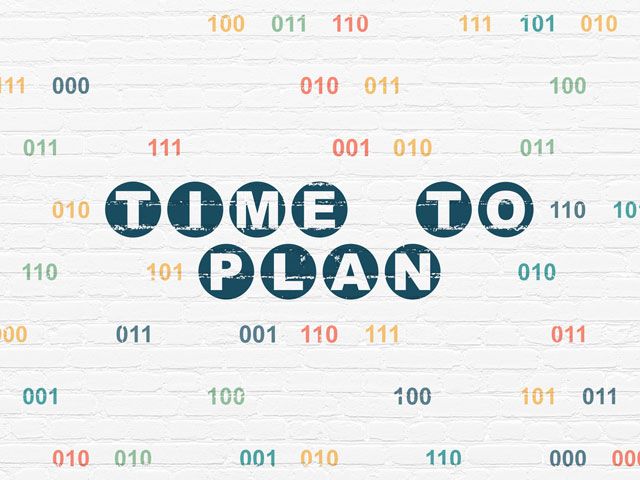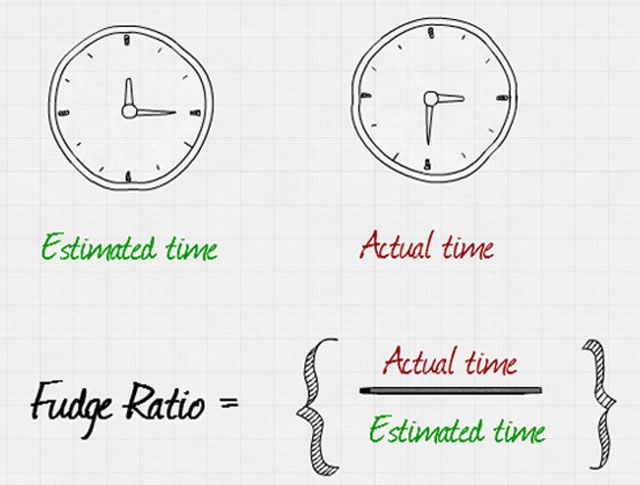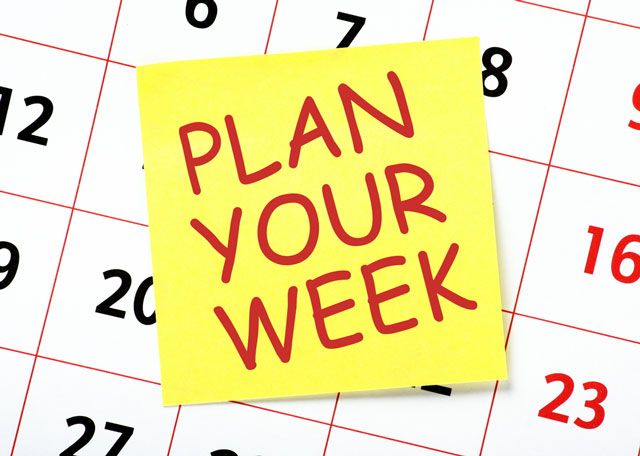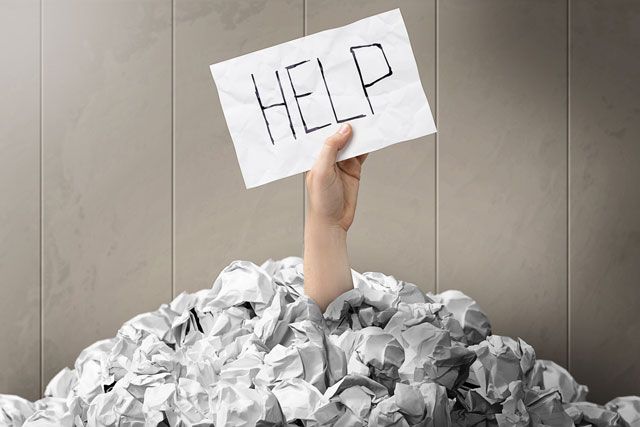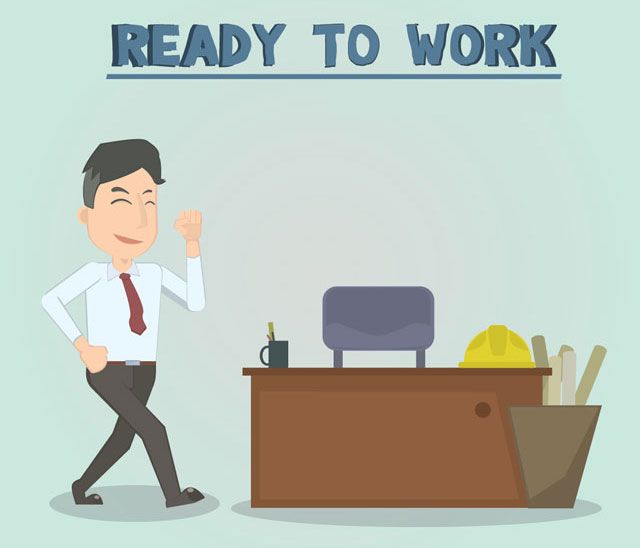The clever thing about the best productivity hacks is that they are easy to start.
The difficult thing is to keep them going. Day after day. Like a well-oiled cog of a perpetual machine.
Consider the alternative to this image. Productivity has a cost and you can calculate it simply by tracking the time you spend on useful tasks and the minutes you waste. The eSignature brand SignNow put together a few shocking figures two years back. Here's a reality check for all of us:
Time spent searching for misplaced items in the office combined with searching for lost files on the computer; the estimated dollars spent reaches more than $177 Billion annually.
I wonder how they calculated that, but distractions, diversions, and interruptions are three villains who loot the dollars and leech the seconds. Zero waste may be a Dystopian fantasy, but all of us can use a bit of productivity in our everyday lives. Here are a few simple and smart productivity hacks for everyone.
Enter a Time Box
We overspend on stuff we don't need. And we frill away time on stuff we don't need to do. Time is an expendable resource and it needs a budget to manage it.
Do the simple time exercise Scott Behson tells us to do in a Harvard Business Review article and find the spare change among the 168 hours of every week. If you are not using it, then something is picking your pockets. And try this free tool to find how much your time is worth to you. Take stock of your time before you read the next sentence.
Use rigorous Time Boxing to budget your time and fight distractions. Set time limits for the duration of a task. It is a productivity idea borrowed from software development. Rob Nightingale also explains the idea of using blocks of focused time as a secret weapon against procrastination.
Use something as simple as a spreadsheet to block specific items to fixed slots of time. Combine with a simple Pomodoro timer. At the end of the day, don't forget to reward yourself.
Tools you can use:
Practice Estimating Time
We come hardwired with a bug called The Planning Fallacy. It just won't let you make accurate plans. We always underestimate the time it will take to finish a task or a project. The larger the project, the bigger the lapse.
Good news. Use the simple calculation called The Fudge Ratio to get better at avoiding planning fallacy. It is just the difference between the time you expect to take and the time it actually took to complete a task. You can use the ratio to finetune your future predictions. And it gets better with experience.
Steve Pavlina who coined the term recommends several techniques to use the Fudge Ratio. Several time tacking tools can come to your help. Use a spreadsheet to capture the estimated and actual time for your tasks. And here are a few time tracking tools.
Tools you can use:
Log in On a Sunday
I would have put this idea on top of the list but you would have logged out from reading this. After all, no one likes to start work on a Sunday.
But try it for a week. My old boss gave me two pieces of advice to beat the Monday Blues.
Plan your week on a Sunday.
Arrive an hour early on Monday.
I remember him as I went on to jumpstart my productivity. The idea is to not let the dread of a Monday brain numb us. I used the 80/20 rule to plan the big goals for the week ahead. Targeting the 20 percent tasks that will produce 80 percent of the results gave me the big picture and the spark to tackle the week head on.
Arriving an hour early just helped to take advantage of the quiet time.
Tools you can use:
- Single page productivity planners.
- A simple To-Do list or an online calendar.
- Minimalist apps like Weekis or Doris.
Work with a Work Playlist
You might not have heard about the hyped "Mozart Effect", even though you could have kept an ear on the master's music while working. The benefits of listening to the right kind of music for productivity is a popular research topic.
A University of Windsor study in Canada found the positive effects of music on the creativity and timeliness of software design specifically.
The researcher's response to the question, "Should music listening be encouraged in the workplace?" is that over time, music listening based on workers' choice to listen 'when they want as they want,' is beneficial for state positive affect, quality-of-work, and time spent on a task.
Using a playlist for work is one of the more pleasurable productivity hacks you can set up. Find the sounds that work for you.
Tools you can use:
- Focus@Will
- GetWorkDoneMusic.com
- 8Tracks' "Productive" Category
- Reddit LifePRO Tips
- Spotify Radio Channels
Look at Pictures of Cuteness
Did you say "huh!" But a 2012 study from University of Hiroshima claims that after viewing cute images, we perform tasks requiring focused attention more carefully. In short, your concentration improves.
The study brought out a 44% increase in attention spans, and it was all with images of baby animals and not adult animals or pleasant-looking foods that caused the spike.
Does that explain the Internet's obsession with cats? Or that screensaver on your desktop? I just know that a happy office is a productive office.
Tools you can use:
Don't Delay on a Procrastination List
There is a warrior class of procrastination ninjas. It's difficult to spot them in the jungle of cubicles, but you can catch them as they skip to the coffee machine too frequently to replenish their body fluids. You can do one simple thing to avoid joining them.
Create a Procrastination List. It's nothing but a list of low-energy activities that you can do when you don't feel like working.
The ideal thing to do is to sort this list by energy levels or emotion. It can also be a list of generic tasks that take little time. Use them as boosters throughout the day when you feel unmotivated for bigger tasks. Allison Graham at Fast Company says a low-energy to-do list will help you embrace procrastination.
Reading industry magazines, organizing folders on your computer, rearranging your filing cabinet, exporting and reviewing your contact lists on social media. The list of activities that can be included on your low-energy list is endless.
John Perry calls it "Structured Procrastination". Interesting trivia: He bagged the Literature Ig Nobel prize in 2011 for this theory.
Tools you can use:
- A Post-It note
- Any cross-platform note taking app like Google Keep or SimpleNote.
Become A Keyboard Ninja
First step: Drop the mouse.
Second step: Start small and learn keyboard shortcuts for at least ten tasks you repeat daily.
The education company Brainscape says that mankind can save 8 days per year by learning common keyboard shortcuts. Tally up the 2 seconds per minute that it takes to move your mouse around for your personal figure.
They have a flashcard learning tool for shortcuts, but you can learn on your own too with other resources.
Tools you can use:
Write Yourself Fan Mail
Burnouts and the less serious career brownouts are the stress pile-ups on productivity road. While there are many ways to deal with this real occupational danger – from unplugging to going on a vacation – there is another little thing you can do to regain your work motivation after you figure out what is holding you back.
Follow Seth Godin's lead to recharge your thoughts.
Will your book get a great testimonial? Write it out. Will your talk move someone in the audience to change and to let you know about it? What did they say? Will this new product gain shelf space at the local market? Take a picture.
Writing yourself fan mail in advance and picturing the change you've announced you're trying to make, is an effective way to push yourself to build something that actually generates that action.
Tools you can use:
- Any email app.
- FutureMe.org
Mindfulness Is Great. Spacing Out Is Better
Anecdotal evidence from writers and artists, as well as recent psychological studies, leads to the understanding that in order to really tap the creative potential of the brain, a complex nonlinear system, we should allow ourselves long, uninterrupted periods of idleness.
- Andrew Smart (Autopilot: The Art & Science of Doing Nothing)
Mindfulness is a lifestyle meme now, and we have gone on to advocate mindful web surfing, too. But it is one of those things that is easier on paper than in the nosiness of office life. Daydreaming comes more naturally to us Homo Sapiens. The good news is that it is backed up by science.
Tools you can use:
- A good boss (actually).
- Any technology which allows you to disconnect for a moment.
Take a Walk
Walking is the un-cleverest way to make some endomorphins. It is also the only cure to the epidemic of sitting that is sweeping the world.
Now, another critical reason has been discovered with the help of a Stanford study – productive creativity.
A person walking indoors – on a treadmill in a room facing a blank wall – or walking outdoors in the fresh air produced twice as many creative responses compared to a person sitting down. (...) The act of walking itself, and not the environment, was the main factor. Across the board, creativity levels were consistently and significantly higher for those walking compared to those sitting.
The researchers found that creative juices continued to flow, even when a person sat back down shortly after a walk. Any form of walking enhanced creative thinking by nearly 60%. Next time, instead of playing time-wasters on your phone or checking Facebook, try a walk.
Start a micro-habit challenge for walking every day. It could also help break that afternoon non-productive slump.
Tools you can use:
- Workrave (Windows and Linux)
- Stand Up! The Work Break Timer (iOS)
Which Productivity Hack Works for You?
Productivity is a personal quest. There's no one-size-fits-all solution. You might find it with paper and pen. Your colleague in the next cubicle might solve it with cups of coffee. My continuing quest has been to manage distractions and find the elixir at the end of it. I haven't abandoned the search yet. Neither should you.
You can try many office productivity tips. Keep them simple. And keep them coming in the comments.
Tell us some of those tips which have worked for you! How do you get the most out of your work day?
Image Credit: Time Concept by Maksim Kabakou; Advice to plan your week by Thinglass; Young man in suit by VGstockstudio; He'll get on the report by Cartoonresource; Help by lassedesignen; Businessman walking to office desk by nutdanai prathan (All Shutterstock)


